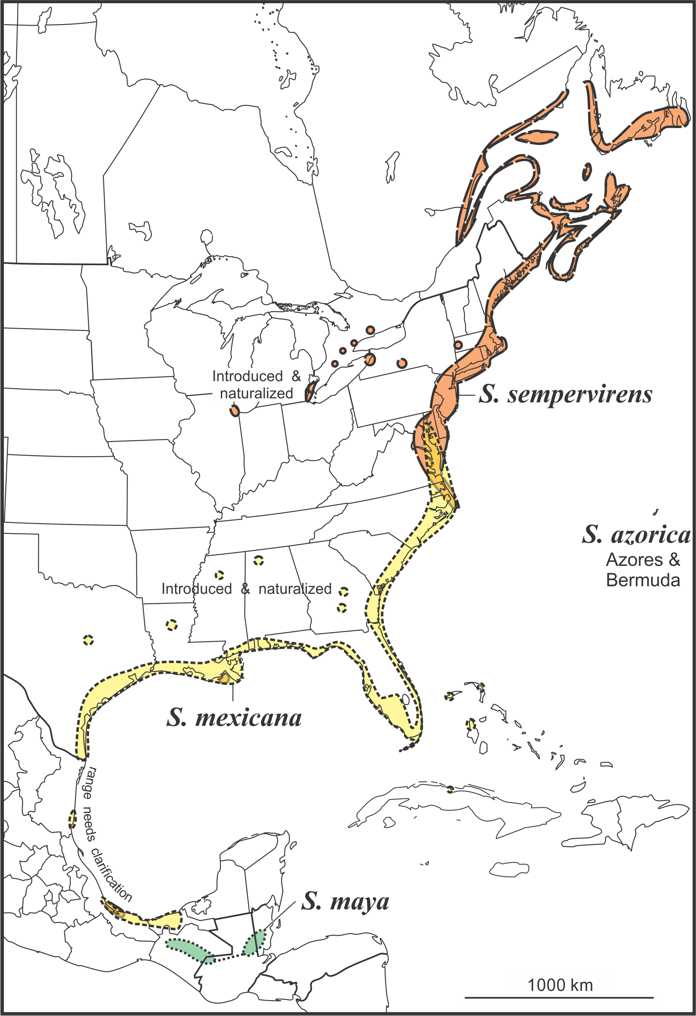Northern Seaside Goldenrod
Solidago sempervirens L. is native to coastal marshes and dunes of the Atlantic from northern North Carolina to Newfoundland. The species is characterized by its numerous, thick, large upper stem leaves, variously secund pyramidal inflorescence, and heads often with 12–17 rays and 17–22 disc florets (Semple & Cook 2006 FNA in part). Semple et al. (2016) noted that the number of florets was only useful as a diagnostic trait a for at the upper end of the range. The lower end of the range was well within the ranges of numbers of florets for S. mexicana. Solidago sempervirens is diploid (2n=18) throughout its range. Semple and Cook (2022) summarized and mapped the cytogeography of all species in Solidago sect. Maritimae including S. sempervirens.
A narrower treatment of the species is followed here than in Flora North America (Semple & Cook 2006); S. mexicana and S. azorica are treated as separate species following the multivariate study of the S. sempervirens complex (Semple et al. 2016). A recently described species S. maya from Chiapias, Mexico, eastern Guatemala and Belize is also included in the complex (Semple 2016). Solidago paniculata from central Mexico is also included in the complex.
Solidago sempervirens has been introduced much further inland in Ontario, Ohio, and Michigan and is establishing itself along roadside ditches in areas with frequent road salting during winter. This expansion into non-coastal area continues. It also appears to have been introduced along the coast in a few scattered locations much further south (e.g., Louisiana and Veracruz, Mexico). It has been reported from the West Indies, but these are likely based on misidentifications or broad application of the species name; these plants belong in S. mexicana.

Amphlett and Semple (2018) reported the presence of S. sempervirens naturalized in Scotland (vc96).
Last revised 19 May 2025 by J.C. Semple
© 2025 J.C. Semple, including all photographs unless otherwise indicated.
1-4. Solidago sempervirens. 1. Mid size plant, Nova Scotia. 2. Tall plants, Semple 11109, Essex Co., Ontario. 3. Invasive plant, Windsor Salt Factory, Ontario. 4. Inflorescence branches, Semple 11822, New Jersey.
Semple, J.C., T. Shea, H. Rahman, Y. Ma, and K. Kornobis. 2016. A multivariate study of the Solidago sempervirens complex (Asteraceae: Astereae: S. subsect. Maritimae). Phytoneuron 2016-73. 1-31.
Amphlett, Andy and John C. Semple. 2018. Solidago sempervirens L. (Salt-marsh Goldenrod) naturalised on saltmarsh at Kingsteps, vc96, – the first record in the wild in Britain and Ireland. BSBI News 138 April 2018.
Semple, J.C. and R.E. Cook. 2022. Cytogeography of Solidago sect. Maritimae (Asteraceae: Astereae). Ann. Mo. Bot. Garden 107: 21-31.







